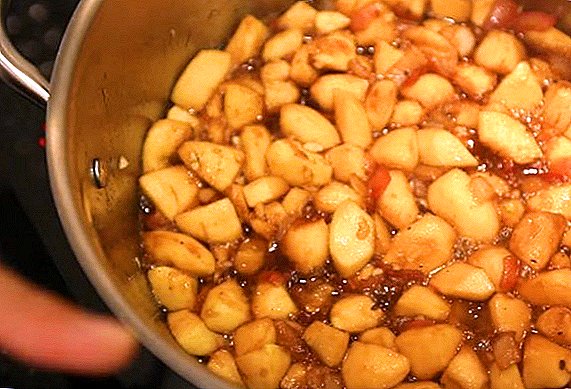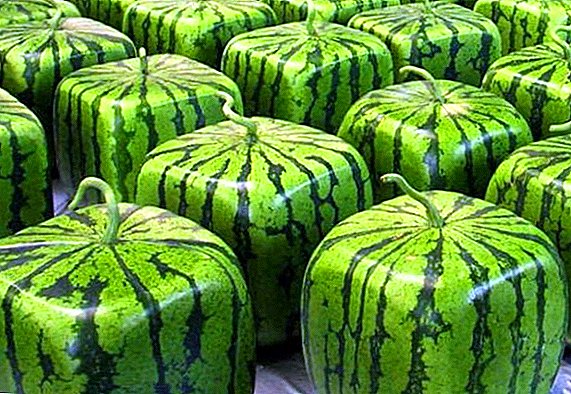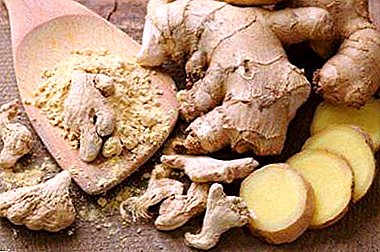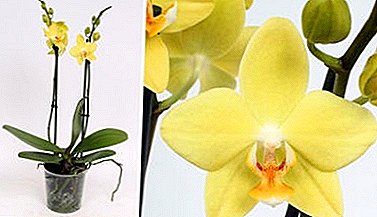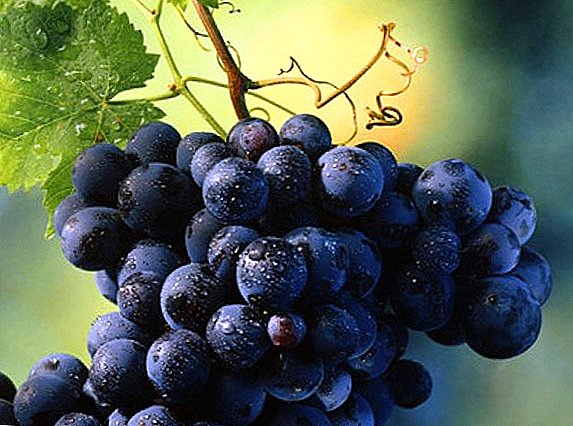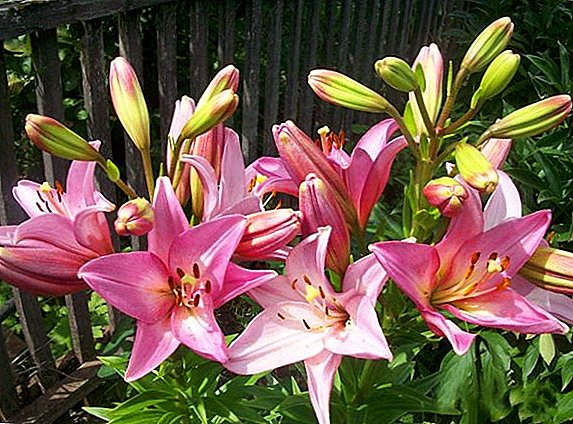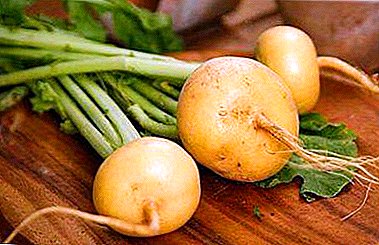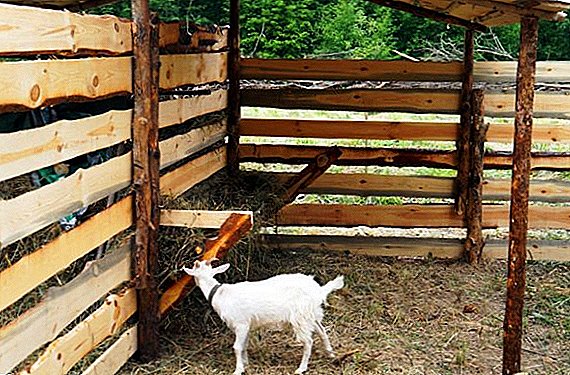 Judging by the reviews of gardeners, it was not life that came for them, but raspberry with the advent of the variety "Joan J." Long-lasting raspberries provide them with a beautiful berry until the cold, without requiring excessive effort to care for them. Raspberry "Joan Jay" has many wonderful qualities and is becoming more common on farms and suburban areas. How to create this variety the most favorable conditions for planting and cultivation, and will be discussed.
Judging by the reviews of gardeners, it was not life that came for them, but raspberry with the advent of the variety "Joan J." Long-lasting raspberries provide them with a beautiful berry until the cold, without requiring excessive effort to care for them. Raspberry "Joan Jay" has many wonderful qualities and is becoming more common on farms and suburban areas. How to create this variety the most favorable conditions for planting and cultivation, and will be discussed.
Variety description
Scotch breeder Derek Jennings bred this raspberry variety ten years ago, and now this berry is known everywhere, right down to distant Chile. For his triumphant march across the planet "Joan J." has every reason.
Find out what the characteristics of raspberry, strawberry and strawberry remontant varieties are and what they are.
It is different:
- remarkable taste of berries, which among remontant varieties are considered the most delicious;
- the ease of separation of ripe berries from the stem, consistency density and strong skin, facilitating the transport of raspberries;
- drought tolerance and heat tolerance;
- the ability to form an abundance of young shoots, which greatly simplifies the reproduction of the plant;
- the lack of thorns on the branches to the joy of berry pickers.

Check out the best varieties of raspberry repair.
However, specialists and gardeners have noticed some properties of this raspberry variety, which can be attributed to the disadvantages:
- Low frost resistance down to minus 16 degrees makes it necessary to cultivate the plant mainly in the southern regions;
- this also forces the onset of fruiting rather late, which is why the berries simply do not have time to ripen in cool climates;
- sprouts growing to one and a half meters in height with a bountiful harvest need to be tied up, for which it is necessary to install trellises;
- the tendency to re-eat quickly requires a quick berry picking.
Did you know? Scientists have concluded that the universe is replete with a chemical compound that gives raspberry its unforgettable taste. If the Universe could have been tasted, then this taste would certainly look like raspberry.

Characteristics of berries and yield
Remontress, that is, giving several harvests for the season, raspberry "Joan Jay" turned out to be very prolific. It is possible to collect up to 17 tons per hectare, whereas, for example, the most popular now “Polka” is unable to give more than 10 tons.
Shrubs "Joan Jay" consist of 5-9 shoots, each of which gives up to 80 berries. And any of these sweet, juicy and aromatic berries reaches a weight of 6-8 g.
Agrotehnika cultivation and care for raspberries
The variety "Joan Jay" is quite unpretentious and does not require excessive efforts for self-care, however, some peculiarities in the cultivation of this crop still exist.
The remontants also include the raspberries of the "Indian Summer", "Diamond", "Heritage", "Polka", "Atlant", "Caramel", "Orange Miracle", "Taganka", "Bryansk Divo", "Gusar" varieties.
Selection of seedlings
Since this variety is quite young and did not get as widespread as other raspberry varieties, the choice of seedlings raises the problem of their reliability. That is, a guarantee that this is really one hundred percent seedlings of exactly the variety “Joan Jay” can only be given by proven, reputable specialized seedling sellers.  They offer customers a rooted seedling system that is professionally packed in peat mix and wrapped up with plastic film, which has a very good survival rate.
They offer customers a rooted seedling system that is professionally packed in peat mix and wrapped up with plastic film, which has a very good survival rate.
Important! To maximize the survival rate of seedlings, experts recommend soaking their root system in phosphate-potassium fertilizers or in biostimulants.
If raspberry bushes of this variety are already present on the site, then there can be no problems with saplings. To get them, you only need to dig up the root growth and plant it in the form of a sapling.
This variety is distinguished by a truly vigorous growth of young shoots, that is, the plant independently reproduces very effectively.
Conditions of detention
The only serious requirement that this plant makes to the conditions of its maintenance is the desire for maximum illumination of the site where it grows.
Therefore, experts recommend choosing a place for planting sunny and, where possible, protected from the winds. And, of course, due to the low frost resistance of this variety, it cannot be planted in places where winter temperatures fall below -16 degrees.
VIDEO: HOW IT IS THE RIGHT TO CHOOSE THE SEEDLINGS OF BERRY CULTURES
Soil and fertilizer
Being remontant and relating to a variety of intensive development, raspberry "Joan Jay" requires increased nutritional value of the soil and regular application of mineral and organic fertilizers. In addition, the soil for this variety should be loose and well drained.
Immediately after the snow melt, the first dressing should be carried out, consisting of 70 g of urea or ammonium nitrate per square meter. In the phase of active vegetation, plants are very useful liquid feed from chicken manure in the proportion of 1 kg per 10 liters of water or cow manure in the ratio of 1 kg per 20 liters of water. This fertilizer is required to be applied at 4 liters per square meter of raspberry pan three times during the growing season. The plant feeding is very well perceived by the wood ash in a dry or diluted state with water.  Every two years, raspberries must be fed phosphate fertilizers. If during the growth of the green mass nitrogen-containing feedings are required first of all, then in the second half of the summer it is necessary to use complex fertilizers.
Every two years, raspberries must be fed phosphate fertilizers. If during the growth of the green mass nitrogen-containing feedings are required first of all, then in the second half of the summer it is necessary to use complex fertilizers.
Did you know? According to folk beliefs, with prosperity, love and kindness, there will always be the house where the aroma of raspberry jam or tea with raspberries is heard.
Watering and moisture
Being a truly drought resistant plant, "Joan J." is able to hold out in the summer without watering for a couple of weeks. However, this does not mean that dry soil is a comfortable state for her. Just optimal for raspberries constantly wet soil. To do this, special irrigation grooves are dug along the rows in the raspberry field, through which water is supplied at the rate of 2-3 buckets per linear meter of trellis.
Relation to temperature
This raspberry is not afraid of high temperatures, but it is very sensitive to severe frosts, which at temperatures below -16 degrees are simply disastrous for it.
Reproduction and planting
Unpretentious variety "Joan Jay" and when planting some privileges for themselves does not require. The main thing is that the place where the bushes grow will be sunny and the soil loose, fertile and drained. The interval between the landing pits should be about half a meter, and the rows should be separated by about two meters.  Before planting, it is recommended to pour half a bucket of humus over each pit. Seedlings are covered with soil in such a way that it does not turn out to be higher than the root collar. After planting, you should immediately pour each seedling with two buckets of water. The raspberries planted in the fall will begin to give berries for the next season, and during the spring planting the harvest will be already this season.
Before planting, it is recommended to pour half a bucket of humus over each pit. Seedlings are covered with soil in such a way that it does not turn out to be higher than the root collar. After planting, you should immediately pour each seedling with two buckets of water. The raspberries planted in the fall will begin to give berries for the next season, and during the spring planting the harvest will be already this season.
Pruning
During spring sanitary pruning, first of all, it is necessary to remove dried stems, and then prune the remaining branches to the first viable bud. Therefore, for this operation should wait for the swelling of the kidneys.
The main pruning is carried out in late autumn, during which the sprout-bearing shoots are completely cut.
We advise you to learn how to properly trim the raspberries.

Important! Too dense thickets raspberries should certainly thin out.In terms of pruning should take into account one more thing, it is characteristic of this particular variety. Since, on the one hand, in the summer raspberries grow very lushly, and on the other - it is extremely demanding of sunlight, a contradiction arises: dense thickets start to impede the penetration of sunlight, and the yield is rapidly falling.
Growing difficulties and recommendations
Undemanding and unpretentious variety does not cause any difficulties in its cultivation. However, it is necessary to work a little, for example, when laying irrigation grooves or when making trellis and tying to them one and a half meter raspberry branches. Summer thinning of dense thickets is not a simple task either. For winter, raspberry bushes are recommended to be insulated with any covering agent such as shavings, sawdust, straw or nonwoven garden material.
In order not to freeze out the raspberries in winter, it is necessary to properly prepare it, as well as to use shelter.
Pests, diseases and prevention
This variety is fairly resistant to the main crimson diseases and pests, however, during unfavorable periods it can be susceptible to diseases characteristic of all raspberry varieties, in the form of:
- phytopathogenic fungus purple spot, affecting shoots;
- gray rot, which spoils the berries;
- marsupial fungus, common in all regions where raspberries are grown.
 Gray rot on raspberries
Gray rot on raspberries
Find out what are the dangerous diseases and pests of raspberries and how to deal with them.
In the form of preventive measures to combat diseases and parasites, in addition to four times per spraying season, agronomic techniques are used in the form of:
- regular thinning of overly thickened raspberries;
- constant weed control;
- moderate use of nitrogen fertilizers, an excessive amount of which increases the susceptibility of raspberries to diseases;
- optimal watering;
- use of proven planting material;
- systematic removal of diseased shoots.
In just a decade, the raspberry variety "Joan Jay" managed to prove his worth, won a place under the sun in the raspberries around the world and won the hearts of gardeners. Excellent sweet and sour taste of large, juicy and beautiful berries, their subtle aroma and truly rich harvest - these qualities put Joan Jay among the favorites among other varieties of repair raspberries.
Cultivation Reviews




